Mitsubishi Outlander PHEV: putting its title back on the line

(Vancouver) Avant-garde in its infancy, the Outlander PHEV is renewed (finally) to better repel the assaults of the competition.
Contents [hide]
Repeat success
With a grand total of 300,000 units distributed since 2013, the Outlander PHEV is the best-selling plug-in hybrid vehicle in the world. Mitsubishi is counting on this second generation to stay ahead of the pack and, above all, to establish itself as a real alternative to SUVs that only drink gasoline.
Despite the successive delays and postponements of its entry into service in North America, the Mitsubishi Outlander PHEV has become the leader in its category. Far from taking its lead for granted, Mitsubishi still waited almost 10 years (might as well say an eternity) before renewing it. And this long delay between the first and the second generation is explained. The Japanese brand had other concerns. First, it was swimming in the midst of a scandal on its domestic market (rigged consumption of its K cars) and was negotiating its entry into the Renault-Nissan alliance at the same time.
-

PHOTO PROVIDED BY MITSUBISHI MOTORS
The all-wheel drive of the Mitsubishi Outlander PHEV has four driving modes depending on the terrain conditions (Tarmac, Gravel, Snow and Mud).
-

PHOTO PROVIDED BY MITSUBISHI MOTORS
The dashboard of the Mitsubishi Outlander PHEV
-
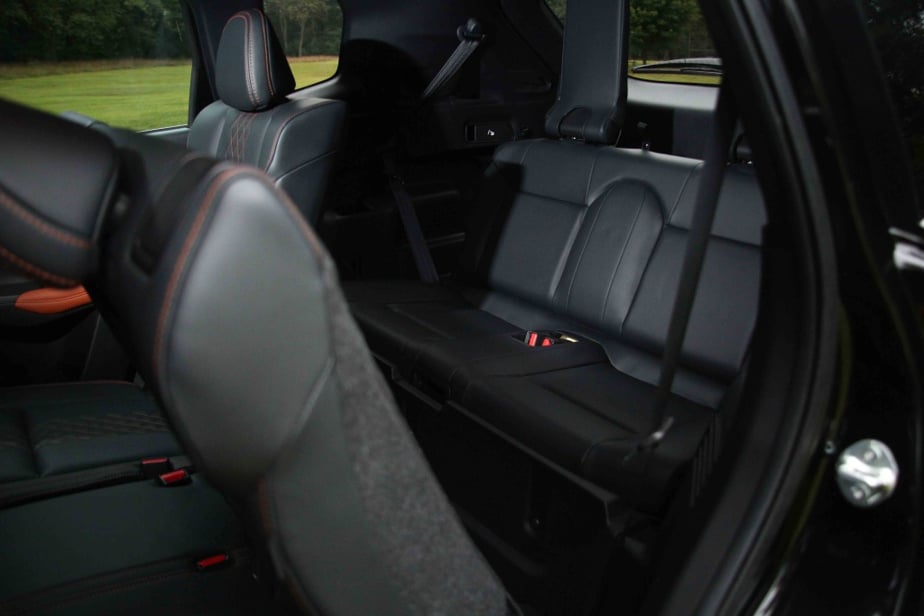
PHOTO PROVIDED BY MITSUBISHI MOTORS
The greater compactness of the electrical unit frees up space, which has made it possible to integrate a third bench seat.
-

PHOTO PROVIDED BY MITSUBISHI MOTORS
The trunk of the Mitsubishi Outlander PHEV
-
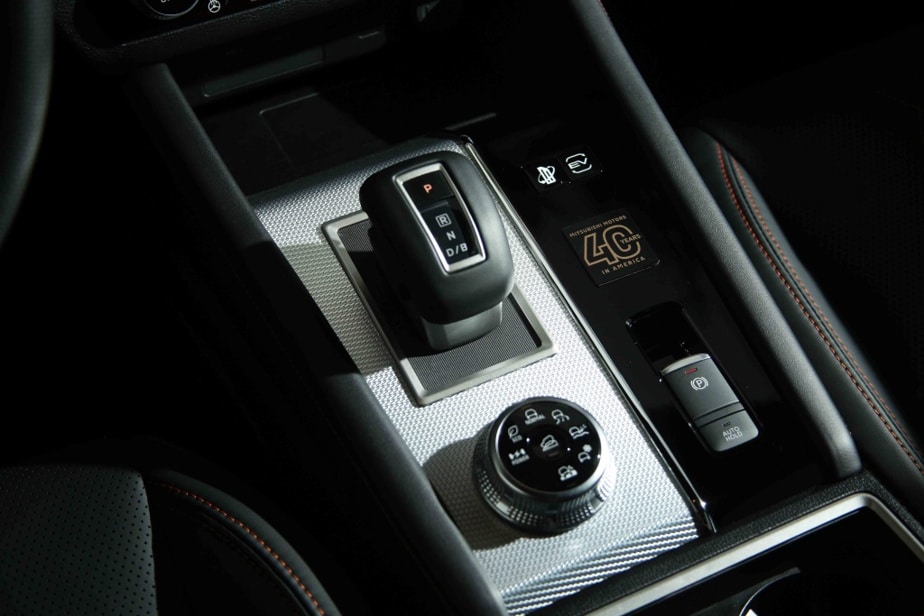
PHOTO PROVIDED BY MITSUBISHI MOTORS
Overview of commands
-

PHOTO PROVIDED BY MITSUBISHI MOTORS
It takes 38 minutes on a fast terminal (0-80%) and a little over 6 hours on a level 2 terminal to “fill up” on an electrical outlet.
-
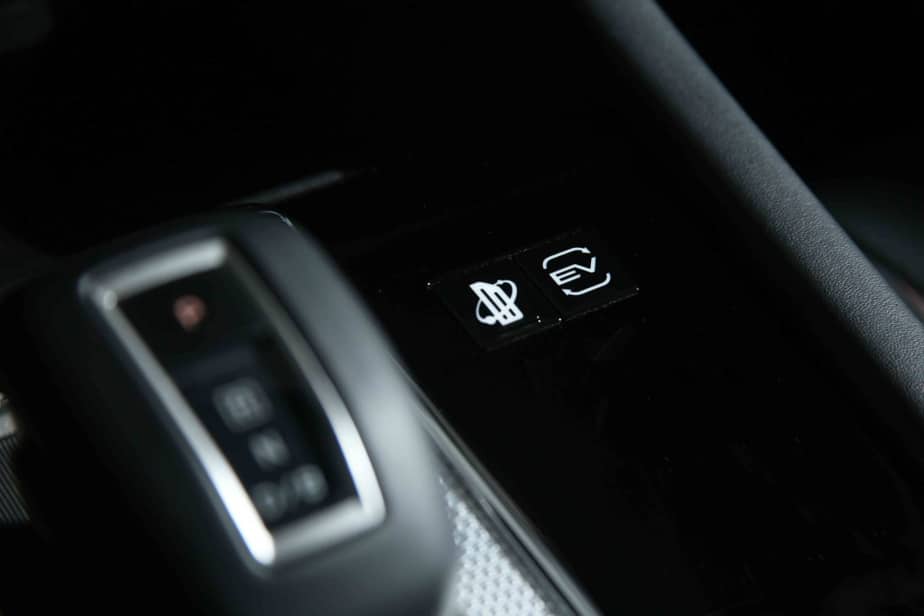
PHOTO PROVIDED BY MITSUBISHI MOTORS
The intelligent pedal of the Mitsubishi Outlander PHEV
-
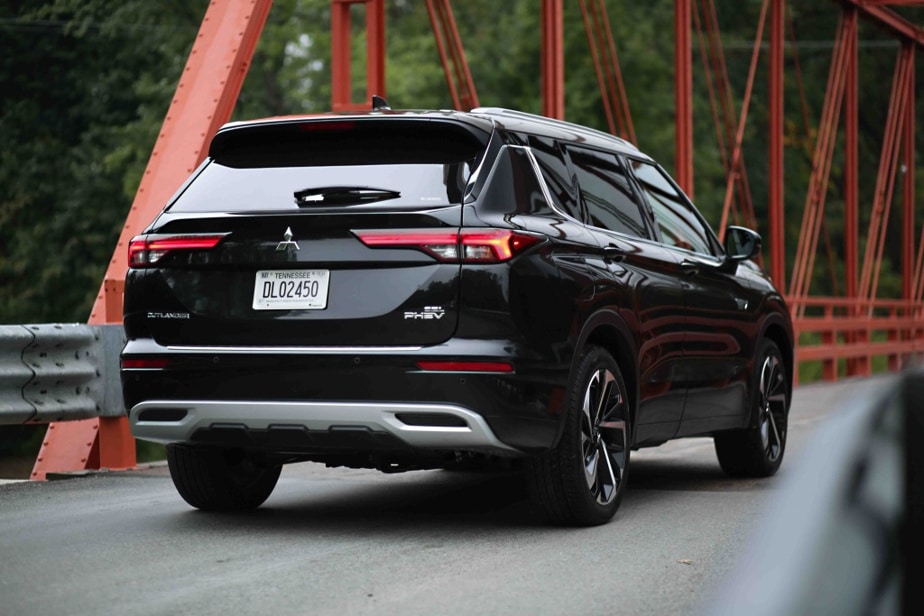
PHOTO PROVIDED BY MITSUBISHI MOTORS
The high technological content of this Mitsubishi may seem confusing at first, but will delight those who like to “be one with their vehicle”.
1/8
This preamble brings us to this second generation of the Outlander PHEV, which is now beginning its career in dealerships. A new version that arrives just in time to fend off competition that continues to grow, despite the reluctance expressed by certain environmental associations. These criticize these plug-in hybrids for not encouraging motorists to change their behavior (read to get into the habit of plugging it in) and for ensuring that they consume more than they claim. Some even go so far as to assert that this technology will be obsolete once cost parity between electric and thermal vehicles is reached. That remains to be seen.
The stream pass
Work on this second generation of PHEV began a little over five years ago with the aim of increasing ecological performance. Without overwhelming you with technical details (see boxes in the “Technical sheet” tab), let’s remember the essential: electric range. This jumps from 39 to 61 kilometres. A fact that is all in all very relative. The conditions (weather and road) and the behavior of its driver will influence how quickly the accumulators go flat.
Unlike the previous generation, the Outlander PHEV no longer solicits its gasoline engine as eagerly. This is largely due to the use of a larger capacity battery (20 kWh instead of 13.8 kWh) which makes it eligible for government subsidies ($10,000). The thermal portion (2.4L four-cylinder) benefits from a few additional horsepower, but its performance, once the battery is discharged, remains disappointing with an average of more than 9 L/100 km. Its main rivals display much more sober consumption. That said, we whisper without specifying a timeline that the designers of the Outlander PHEV are already working on a more efficient gasoline engine.
With a capacitor filled to its maximum capacity, the Outlander PHEV nevertheless claims a combined consumption of 6.6 L/100 km, which is not so bad. But he can do better. This is barely less than the non-rechargeable hybrid engine of the Sienna (Toyota) with which we obtained 6.9 L/100 km in substantially equivalent conditions.
In terms of dynamic performance, however, the Outlander PHEV has the merit of accelerating harder and executing overtaking maneuvers with more vitality compared to the gasoline-powered Outlander. In addition, if desired, the driver can manage the operation of the hybrid system as closely as possible.
Behind the steering wheel, paddles allow the engine brake to be dosed, which acts as an energy recuperator when you lift your foot. To these technical refinements is also added a new device called “innovative pedal” with unconvincing performance, insofar as it does not allow, unlike the vast majority of purely electric vehicles, to immobilize the vehicle completely.
Modular all-wheel drive
The motorist also has the possibility of setting up the all-wheel drive in abundance. It has three driving modes (Eco and Normal, Power) and four others depending on the terrain conditions (Tarmac, Gravel, Snow and Mud). What should be remembered here is the significantly increased power of the rear electric motor. This allows the Outlander PHEV to mimic the reactions of rear-wheel drive during hard acceleration and ensures safe and predictable handling, especially on low-grip pavement. In addition, the greater compactness of this electric unit frees up space. This made it possible to integrate a third bench seat (this one is reserved exclusively for young children) and to increase the capacity of the gas tank to 56 L compared to 43 L previously.
The high technological content of this Mitsubishi may seem confusing at first, but will delight those who like to “be one with their vehicle”. But also those curious people who wish, without any apprehension, to learn more about more efficient, more proactive and above all more ecological driving. Therefore, for its purchase to make sense, the Outlander PHEV must regularly “refuel” on an electrical outlet. On this subject, it takes 38 minutes on a fast terminal (0-80%) and a little more than 6 hours on a level 2 terminal. Mitsubishi could have done better in this area and taken inspiration from the competition, which usually offers a more powerful built-in charger. That said, the Outlander PHEV has two outlets (maximum capacity of 1500 watts) capable of running small household appliances (coffee maker, toaster) and V2H (Vehicle to Home) functionality to supply electricity to one’s residence.
The costs related to this report were paid in part by Mitsubishi Motors.
Mitsubishi Outlander PHEV
Price range
From $46,538 to $57,948
Consumption and range (electric)
6.6 L/100 km, 61 km electric range
WE love
Nomenclature and tariffs
Front seat comfort
Performance all-wheel drive
We love less
Disappointing gasoline engine efficiency
Inability to stop on your own (Innovative Pedal)
Always faithful to the CHAdeMo standard (fast charging)
Our Verdict
Good ideas, despite few means
Technical sheet
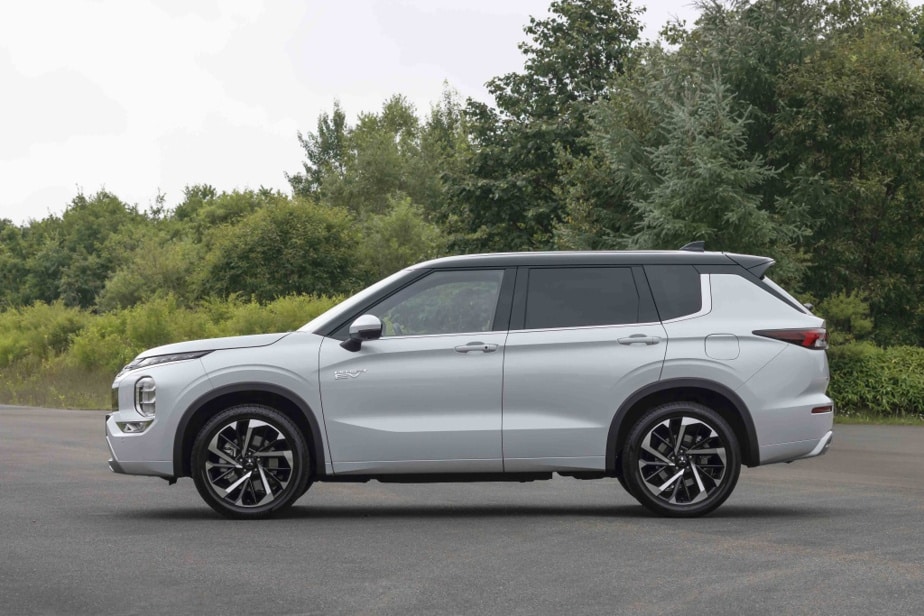
PHOTO PROVIDED BY MITSUBISHI MOTORS
Mitsubishi Outlander PHEV
Engines
- 2.4L L4 DOHC combined with two synchronous electric motors
- Combined power: 248 hp
- Combined torque: 332 lb-ft
- Battery: 20kWh lithium-ion
Performance
- Weight: 2090 kg
- Towing capacity: 680 kg
- Ground clearance: 197mm (18″ wheels), 201mm (20″ wheels)
Gearbox
- Standard: automatic
- Optional: none
- Drive mode: all-wheel drive
Tires
- 235/60R18 (ES and LE)
- 255/45R20 (SEL and GT)
Tank capacity, gasoline recommended
Dimensions
- Wheelbase: 2706mm, length: 4710mm, height: 1740mm1width: 1862mm2
1 With 20″ wheels: 1745 mm 2 Exterior mirrors folded
Departure with a bang

PHOTO PROVIDED BY MITSUBISHI MOTORS
The 2017 version of the Mitsubishi Outlander PHEV
The Outlander PHEV was introduced in 2013 and is, according to Jato Dynamics, the best-selling plug-in hybrid vehicle in the world. At that time, this Mitsubishi counted on the participation of a 2 L engine and two electric power units (60 kW each). These were powered by a 12 kWh lithium-ion battery. Its density was later increased to 13.8 kWh while the displacement of its heat engine was increased to 2.4 L.
The hybrid under the magnifying glass

PHOTO PROVIDED BY MITSUBISHI MOTORS
“X-ray” of the Mitsubishi Outlander PHEV
The Outlander PHEV can operate in two configurations. In “series hybrid” mode, the two electric motors installed on each axle are powered by a generator that the gasoline engine (a 2.4 L) is responsible for activating, like a generator. In “parallel hybrid” mode, this engine drives the front wheels directly, with the second (more powerful) electric motor acting on the rear wheels.
In preparation for an upcoming report, The Press is looking for victims of aggressive driving. We would love to read and talk to you.












